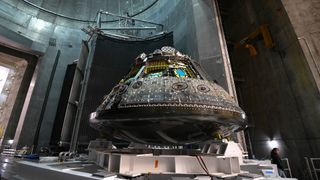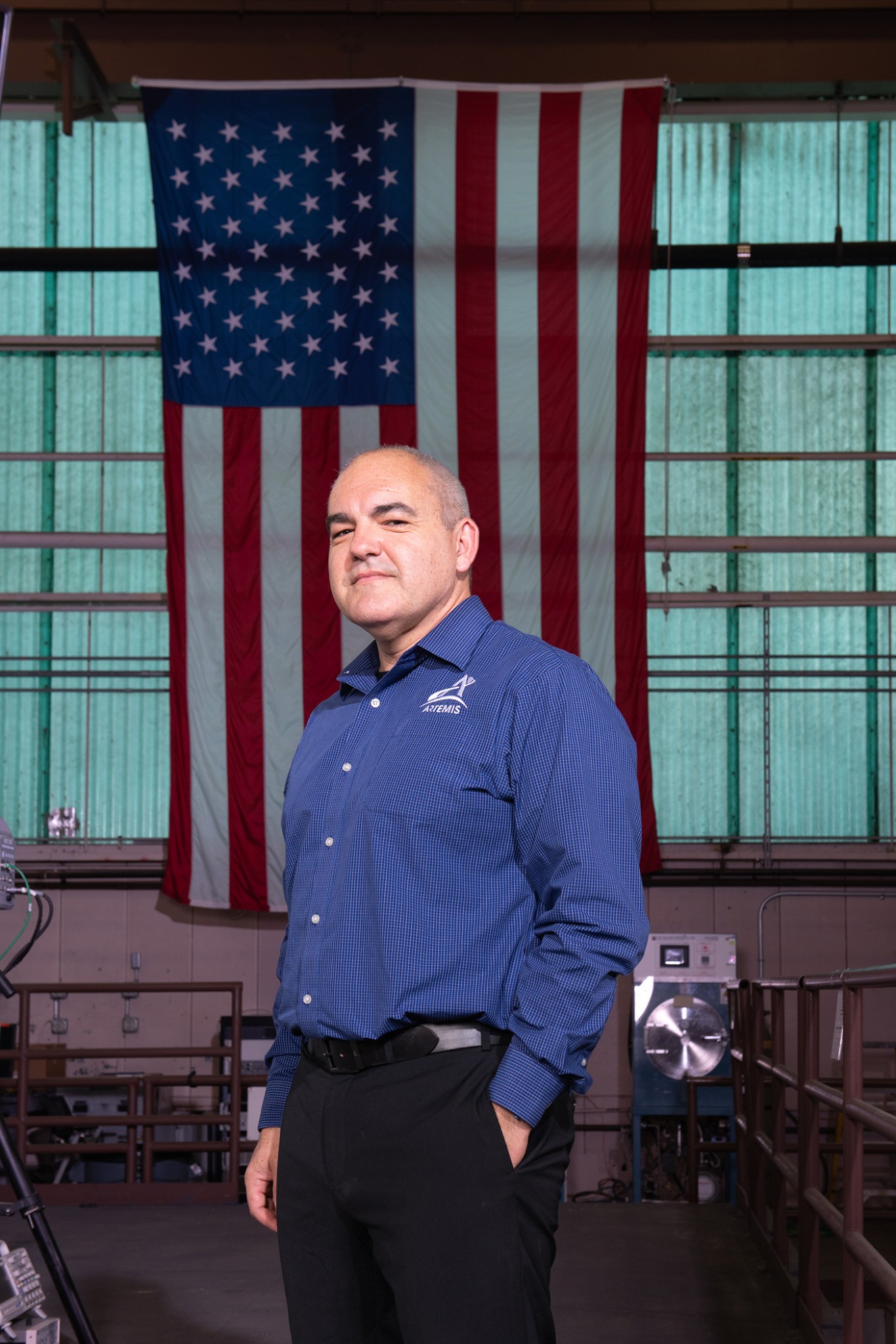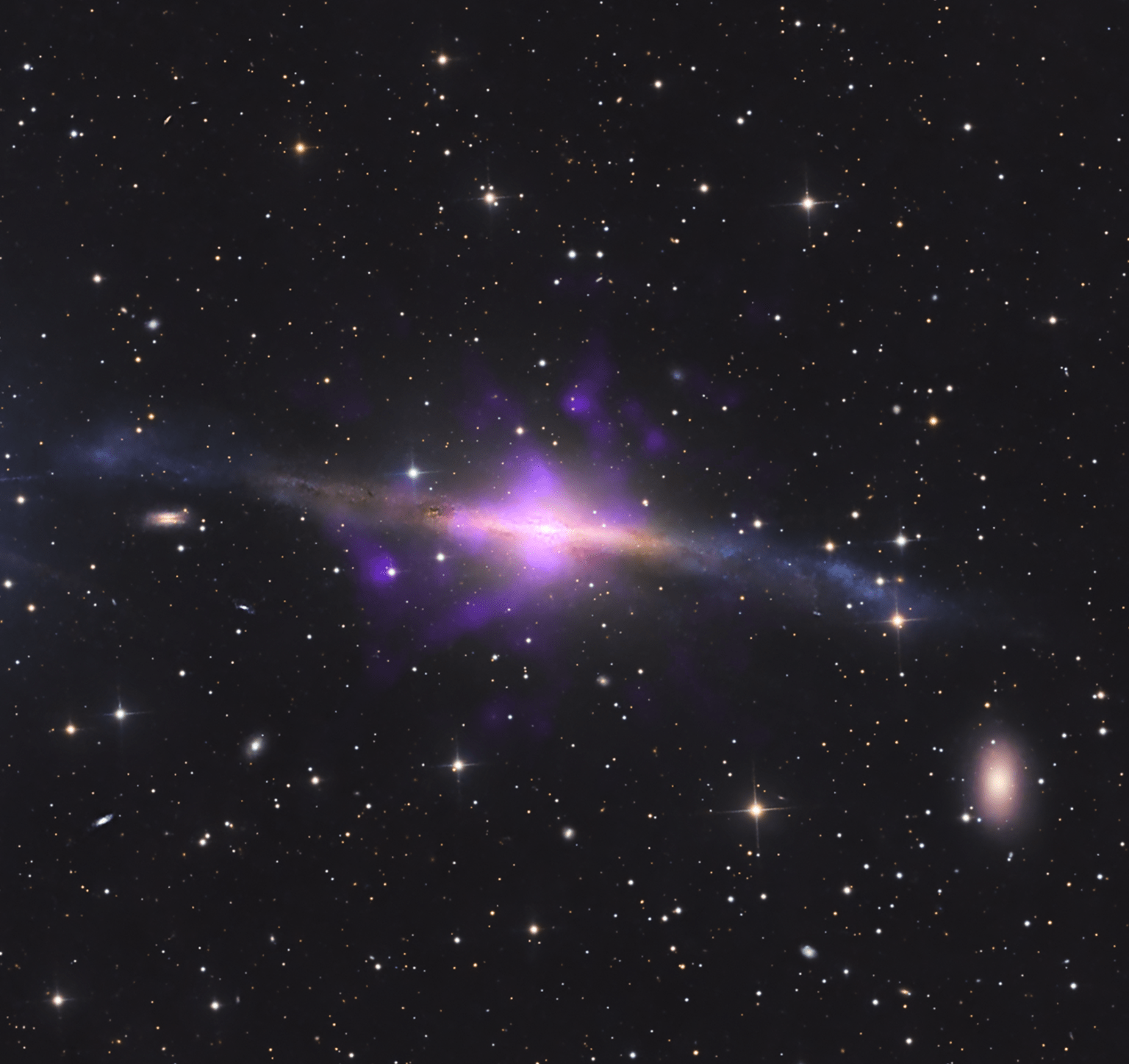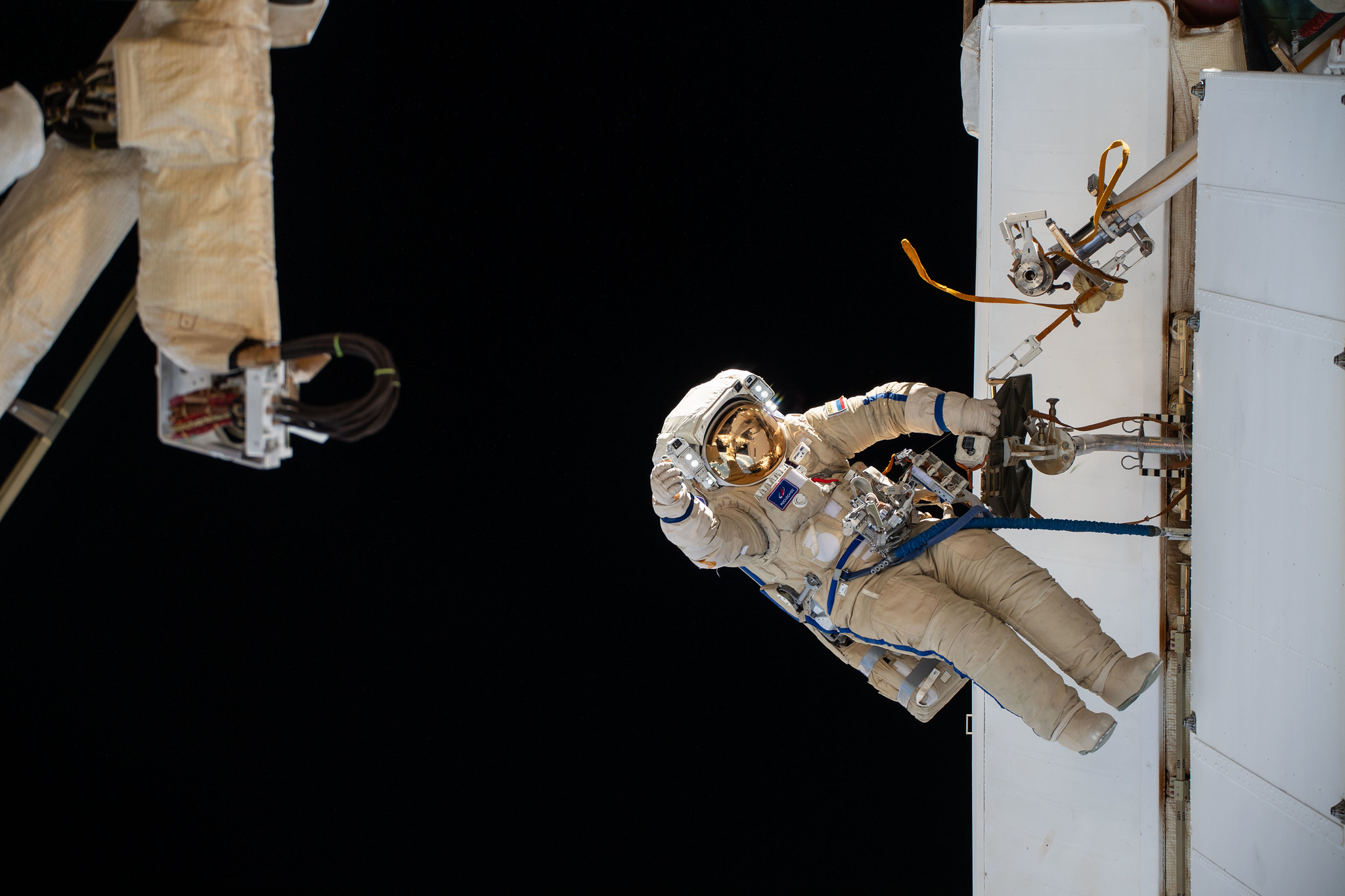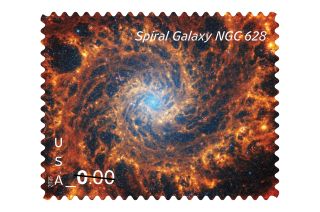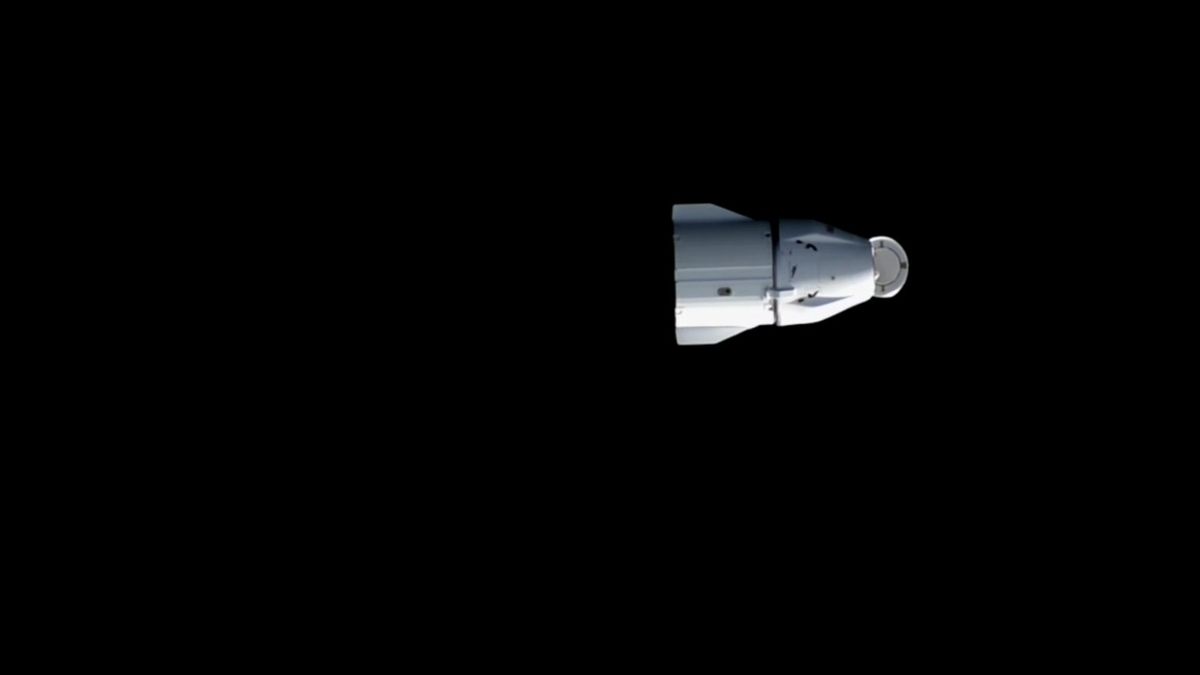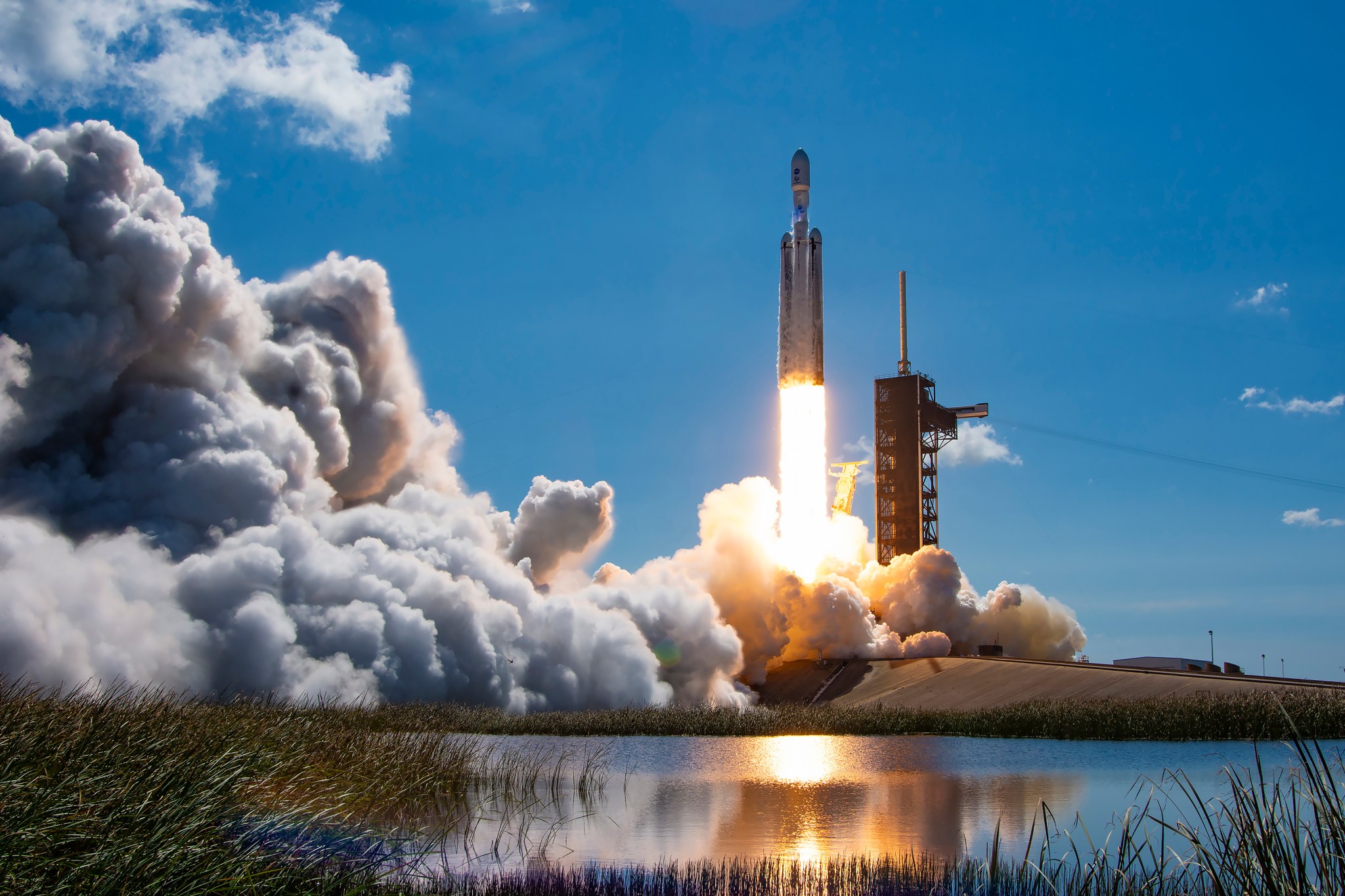Illustration of the main asteroid belt, orbiting the Sun between Mars and Jupiter NASA NASA’s powerful James Webb Space Telescope includes asteroids on its list of objects studied and secrets revealed. A team led by researchers at the Massachusetts Institute of Technology (MIT) in Cambridge repurposed Webb’s observations of a distant star to reveal a population of small asteroids — smaller than astronomers had ever detected orbiting the Sun in the main asteroid belt between Mars and Jupiter. The 138 new asteroids range from the size of a bus to the size of a…
Read MoreTag: Missions
Watch NASA’s Artemis Orion moon spacecraft blow its top during testing (video)
An uncrewed Orion spacecraft successfully traveled thousands of miles beyond the moon and back, demonstrating its ability to one day transport astronauts to lunar orbit — but there are a few more tests the spacecraft has to ace before setting out on that cosmic feat. The Artemis 1 mission that launched on Nov. 16, 2022 saw NASA’s Orion spacecraft fly 1.4 million miles around the moon and back — the farthest a spacecraft built for humans has ever gone — and then execute a planned splash down in the Pacific…
Read MoreNASA Names Carlos Garcia-Galan as Gateway Program Deputy Manager
Official portrait of Carlos Garcia-Galan, deputy manager for the Gateway Program. NASA/Bridget Caswell NASA has selected Carlos Garcia-Galan as deputy manager for the Gateway Program. Garcia-Galan previously served as manager of the Orion Program’s European Service Module Integration Office at Glenn Research Center. “I am tremendously excited to take on this new role and help lead development of humanity’s first outpost in deep space,” Garcia-Galan said. “I’m honored to join a top-class Gateway team around the world, as the first elements of the complex move toward completion.” Garcia-Galan brings more…
Read MoreNASA Finds ‘Sideways’ Black Hole Using Legacy Data, New Techniques
4 Min Read NASA Finds ‘Sideways’ Black Hole Using Legacy Data, New Techniques Image showing the structure of galaxy NGC 5084, with data from the Chandra X-ray Observatory overlaid on a visible-light image of the galaxy. Chandra’s data, shown in purple, revealed four plumes of hot gas emanating from a supermassive black hole rotating “tipped over” at the galaxy’s core. Credits: X-ray: NASA/CXC, A. S. Borlaff, P. Marcum et al.; Optical full image: M. Pugh, B. Diaz; Image Processing: NASA/USRA/L. Proudfit NASA researchers have discovered a perplexing case of a black hole that appears to…
Read MoreNASA Sets Coverage for Roscosmos Spacewalk 63 Outside Space Station
Caption: Expedition 70 Flight Engineer Nikolai Chub from Roscosmos is pictured during a spacewalk to inspect a backup radiator, deploy a nanosatellite, and install communications hardware on the International Space Station’s Nauka science module. Credit: NASA NASA will provide live coverage as two Roscosmos cosmonauts conduct a spacewalk outside of the International Space Station on Thursday, Dec. 19. NASA’s live coverage begins at 9:45 a.m. EST, Thursday on NASA+. Learn how to watch NASA content through a variety of platforms, including social media. The spacewalk is scheduled to begin at…
Read MoreWebb mail: US Priority Mail stamps to again star deep space images in 2025
The universe of United States postage stamps featuring James Webb Space Telescope (JWST) imagery is set to expand again in 2025. The U.S. Postal Service (USPS) on Monday (Dec. 16) revealed that its upcoming Priority Mail and Priority Mail Express flat rate stamps will feature two deep space vistas captured by the Webb observatory. Scheduled for release on Jan. 21, the stamps will be the second set to use JWST photos after the pair issued this year. “USPS celebrates the continued exploration of deep space with an extremely high-definition image…
Read MoreStation Science Top News: Dec. 13, 2024
Benchmarks for solidifying metal alloys Researchers report benchmark data for modeling the growth of specific types of microstructures that form during solidification of metal alloys under different conditions. These microstructures affect the properties of materials and products such as refrigeration devices and solar cells. The ESA (European Space Agency) Columnar-to-Equiaxed Transition in Solidification Processing (CETSOL) investigation studied the processes of metal alloy solidification and the crystal patterns that form as liquids transition to solids. Results could improve ground-based development of lightweight, high-performance structural materials for space and ground applications. Microgravity…
Read MoreSpaceX’s 31st Dragon cargo capsule departs ISS to head home to Earth
SpaceX’s 31st robotic cargo mission is headed back to Earth. SpaceX’s Dragon cargo capsule undocked from the International Space Station (ISS) on schedule today (Dec. 16) at 11:05 a.m. EST (1605 GMT) today (Dec. 16). The spacecraft will begin a series of deorbit burns to complete the company’s 31st commercial resupply services mission (CRS-31) for NASA, splashing down of the coast of Florida tomorrow (Dec. 17). The agency won’t webcast the splashdown but will provide updates via its ISS blog. CRS-31 is returning to Earth with thousands of pounds of…
Read MoreNASA Kennedy Top 24 Stories of 2024
A SpaceX Falcon Heavy rocket carrying NASA’s Europa Clipper spacecraft lifts off from Launch Complex 39A at NASA’s Kennedy Space Center in Florida at 12:06 p.m. EDT on Monday, Oct. 14, 2024. SpaceX From sending crew members to the International Space Station to launching a spacecraft to Jupiter’s icy moon Europa to determine if it could support life, 2024 was a busy record setting year for NASA and its partners at Kennedy Space Center in Florida. JANUARYFirst Lunar Lander Takes Flight The first flight of NASA’s CLPS (Commercial Lunar Payload…
Read MoreWhat causes volcanic eruptions on Jupiter’s moon Io? Scientists aren’t so sure anymore
Jupiter’s volcanic moon Io doesn’t appear to have a subsurface ocean of magma, resolving some issues about how Io’s volcanoes erupt and raising broader questions about similar magma oceans within other moons and planets. Data from previous missions had made planetary scientists wonder whether, rather than just pockets of melt, Io contained a 31-mile (50-kilometer) deep layer of magma: a moon-wide ocean of molten rock. In the 1990s, NASA’s Galileo mission performed magnetic induction measurements that suggested there was such a layer, while more recently, the distribution of volcanoes on…
Read More
